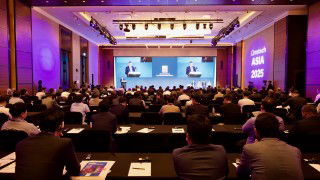Delegates from over 30 countries, including all of the Gulf Cooperation Council’s member states, gathered in Dubai, UAE, between 19-22 February for this year’s Cemtech Middle East and Africa conference and exhibition. By ICR Research, UK.

Over 200 delegates from more than 30 countries attended Cemtech MEA 2017, held at the Grand Hyatt Dubai, UAE
Over 200 delegates gathered in the Grand Hyatt Dubai between 19-22 February for the 12th Cemtech Middle East and Africa conference and exhibition.
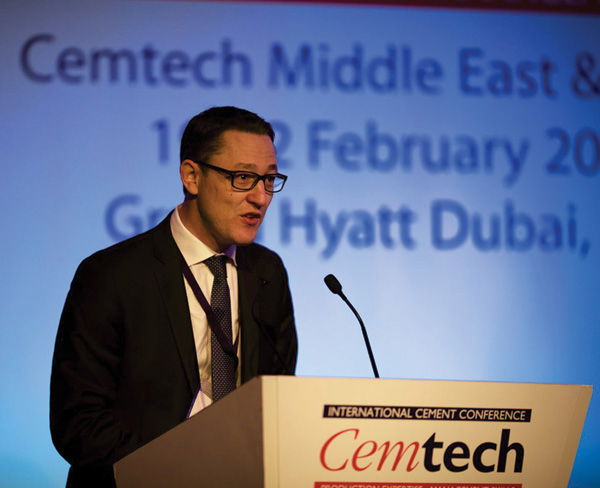
Thomas Armstrong of International Cement Review provides
an overview of the global markets and outlook for 2017
Thomas Armstrong, managing editor of International Cement Review, welcomed guest of honour, His Excellency Sheikh Yasir Bin Ahmed Bin Humaid Al Qassemi, general manager of Union Cement Company and chairman of the Cement Producers Association of the UAE, and delegates from across the world to the conference. In his opening presentation Mr Armstrong set the scene for the conference’s 25 presentations by providing an overview of global markets and expectations for 2017. He predicted that market growth ex-China would accelerate in 2017, driven by developed economies, and finally overtake capacity growth for the first time since 2013. Utilisation rates are seen recovering to in excess of 70 per cent by 2018, making it possible for producers to secure cement price improvements as the demand-supply gap narrows.
GCC markets

Cemtech MEA 2017 Guest of Honour, His Excellency
Sheikh Yasir Bin Ahmed Bin Humaid Al Qassemi, general
manager of Union Cement Co and the
Cement Producers Association of UAE
Matthias Herles, IHS Markit (Germany), provided an update on the construction markets in the Gulf Cooperation Council (GCC) countries, while Hettish Karmani of Ubhar Capital (Oman) reviewed the latest developments in the Gulf cement sector
Economic growth in the GCC is expected to decelerate despite increased hydrocarbon output. While this is reflected in lower infrastructure spending in Oman, other GCC countries are increasing their investment in infrastructure. For example, Qatar is nearly doubling its investment while significant advances are also forecast in the UAE and Saudi Arabia.
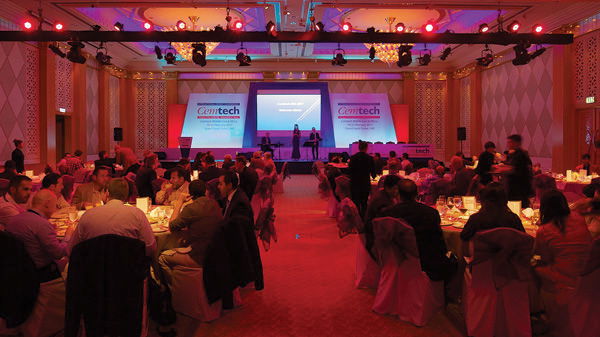
Cemtech MEA 2017 welcomes its guests
during an informal Welcome Dinner
Meanwhile, on the back of cement demand growth, GCC producers have steadily built their capacities from 104Mta in 2010 to 139Mta in 2016. However, supply is considerably above demand and a surplus of over 40Mt is anticipated in 2017.
A further challenge to the industry is presented by the removal of energy subsidies by the government with increases in the prices of electricity, water and fuels. However, raw material prices are on the decline, giving cement producers some relief going forward.
Focussing on Saudi Arabia, Santhosh Balakrishnan of Riyad Capital (Saudi Arabia) considered the demand drivers and outlook for the Saudi cement industry. He foresees a structural shift in the country’s cement demand from mega projects to housing construction but does not anticipate a recovery before 2018 as currently falling demand, peaked inventory and competitive pricing are key industry concerns. In addition, cost pressures are expected to increase with the implementation of new gas prices from 2019 as the country faces the brunt of fuel hikes.
Further afield

Dr Lotfali Bahkshi highlighted the latest trends
in the Iranian cement industry
Dr Lotfali Bakshi of Iran Cement and Mehr Machine Co highlighted new trends in the Iranian cement industry, where capacity has reached 90Mt. Due to tough domestic conditions, exports remain key for producers and totalled 15Mt in 2016.
Moving to Africa Tony Hadley of Baobab Advisory (France) explored the recent turmoil of the continent’s cement industry, resulting from a combination of negative economic forces and poor industrial leadership. Increased competition has seen prices falling to a new lower level and companies will now be required to improve operational excellence to remain competitive. On the demand side, however, the outlook is positive as African consumption continues to rise.
Birla Corporation’s Alok Agarwal focussed on industry consolidation in the Indian cement sector and the market outlook for the world’s second-largest cement producer, where capacity is approaching 400Mta.
Supporting the sector’s sustainable development
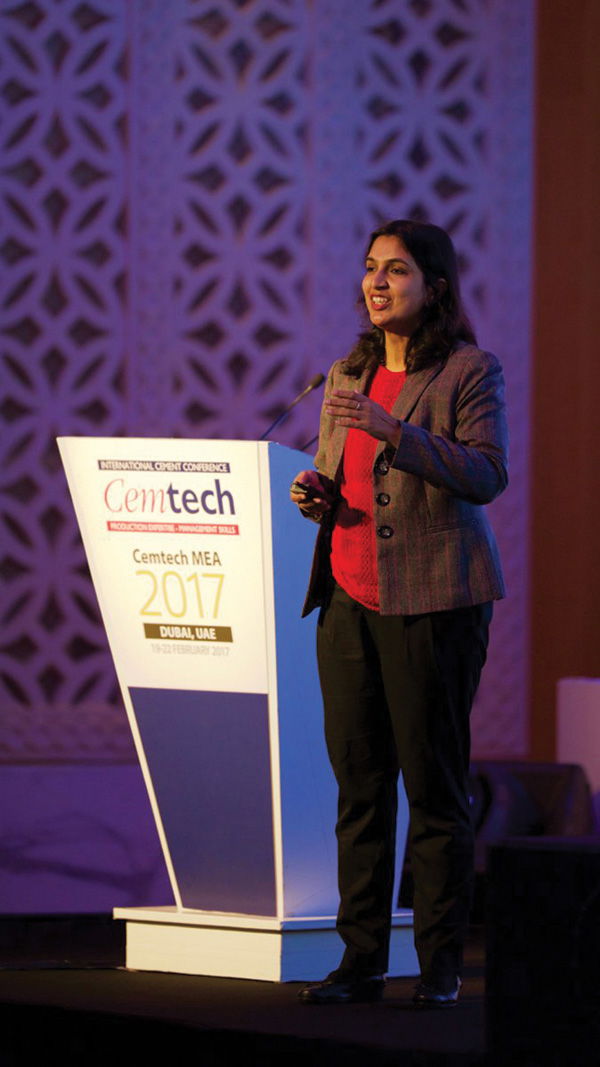
Dr Suchismita Bhattacharya, Ercom Engineers, India,
explains the role of slag and fly ash
cements in the Middle East
The conference also supported the cement industry’s drive for sustainable development with several specialist papers.
Jim O’Brien of Jim O’Brien CSR Consulting (Ireland) explained how a cement producer’s efforts in sustainable development benefit the bottomline.
UK independent consultant Peter Hoddinott highlighted working capital reduction strategies, a vital management skill for companies attempting to remain competitive. Reducing working capital can free up significant levels of cash in a business, which can be used by management to reinvest more productively within the company.
S Raja and V Murthy of Fujairah Cement Industries of the UAE reviewed the performance of a 12MW waste heat recovery plant.
Dr Suchismita Bhattacharya, Ercom Engineers (India) highlighted the role of slag and fly ash cements in the Middle East. Tahir Abbas of Cinar (UK) and Jawad Baidari of Beumer (Germany) presented alternative fuel case studies as they explained the supply chain from preparation to combustion and fuel handling systems, respectively. Hassan Jradi of FLSmidth Pfister provided his company’s perspective on alternative fuel and biomass in the Middle East.
Updating technical knowledge
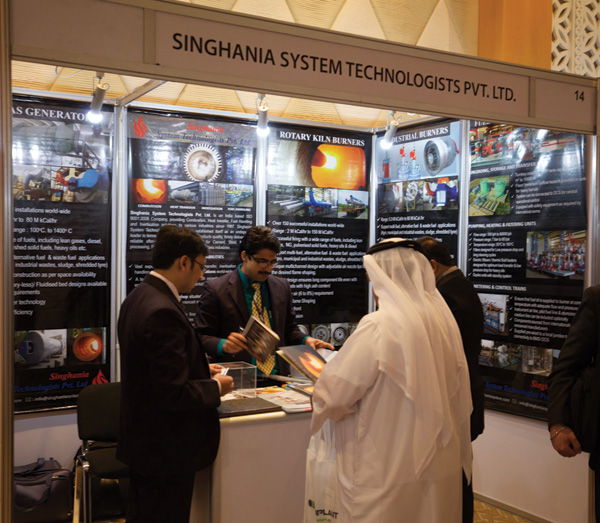
Delegates were able to discuss plant issues with equipment
suppliers at the event’s accompanying exhibition
Delegates were able to update their technical knowledge via a series of presentations relating to a range of aspects of the cement production process.
Volker Hoenig of Germany’s VDZ provided information on kiln reviews to improve efficiency, output and production costs while Mogens Fons of Fons Technology International, Turkey, highlighted his company’s clinker cooler technology with a number of case studies. Gebr Pfeiffer’s Patrick Heyd provided an update on the latest experience with MVR mills while Mohammad Mehidi Khoozestani of Namadin Sanat Co of Iran explained how a novel control system could improve ball mill energy efficiency.
Fernando Dueñas of Cemengal, Spain, explored ways to quickly penetrate booming cement markets by means of modular grinding units.
Together with Juliano Arantes of ABB, Osman Nemli of Bursa Çimento presented a case study on how the Turkish cement producer improved its energy and process efficiency with ABB’s Expert Optimiser.
Union Cement plant tour

Delegates were invited to view Union Cement’s
4.8Mta Ras-Al-Khaimah cement works
Delegates also had the opportunity to visit Union Cement Company’s 4.8Mta cement works situated in Ras-Al-Khaimah. The facility, which acts as one of the main exporters in the UAE, boasts a 10,000tpd clinker line and has also recently installed a 12.38MW waste heat recovery (WHR) system.
Networking opportunities
In addition to the conference, delegates were also able to get first-hand information from some 25 equipment suppliers in the accompanying exhibition while other hospitality events, including a sumptuous Gala Dinner, provided further opportunities to network with industry leaders and cement professionals.
Technical workshop
Parallel to the conference and exhibition, Cemtech was also home to a three-day workshop on cement manufacturing technology, held between 20-22 February.
Led by industry expert Dr Michael Clark, the classroom-based training course covered all aspects of the production process, from raw material processing to cement grinding.
The course explored best-practice techniques and plant optimisation, including alternative fuel utilisation and CO2 reduction.
Next Cemtech conference
Next on the calendar is Cemtech Asia 2017, to be held between 9-12 July at the Shangri-La Hotel in Singapore.
Article first published in International Cement Review, April 2017.
